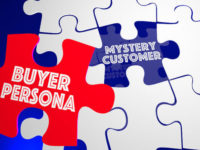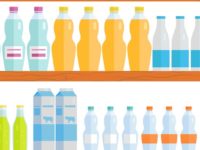The COVID Experience has changed peoples’ buying behaviours and perception of value in both predictable and unpredictable ways. Doing a periodic Value Proposition analysis will help to ensure your product, business, brand and marketing strategy are hitting the mark now and into the future.
A value proposition is the point at which your product or service dovetails with your customers’ desires. Completing a Value Proposition Canvas helps you unpack and express why people would buy what you deliver and forms the basis of your business and brand strategy.
In 2012, Alex Osterwalder released the Value Proposition Designer, but the version created by Peter J Thompson is my preferred tool, as the product proposition is grounded in marketing, branding, persuasion and creative thinking; while the customer proposition is based on customer behaviour research, digs deeper into customer empathy and draws out new insights.

The Product Proposition Side uncovers how features and benefits feed into ‘product experience’ and how to express this to the customer in our “experience economy.”
- Features are a factual description of how your product works or the functioning attributes of your product. Features may not offer a point of difference in many goods, but in tech products and innovative new services they can form part of your value proposition. If your feature doesn’t have a corresponding benefit, leave it out.
- Benefits are what your product does for the customer, ways that the features make life easier by increasing pleasure or decreasing pain and are the core of your value proposition. Imagine and list the ways the features of your product makes the customer’s life better.
- Experience is how owning and using your product makes the customer feel. This taps into the emotional reasons for the purchase, what it means and how it will make a difference in their lives. Expressing the ‘product experience’ helps identify market positioning and brand essence.
The Customer Proposition Side expresses the rational and emotional drivers in the customer’s aspirations to be the best version of themselves and is key in a ‘transformational economy.’
- Needs are the rational things that the customer needs to achieve and are not always conscious. ‘Latent needs’ are things we didn’t know we needed until we saw them, e.g. the first time we saw an iPod or Uber. Needs are the pull of our heads.
- Wants are the emotional drivers for the things that we want to be, do or have. Wants are usually conscious and aspirational desires for improving our lives. (I need a car, but I want an Audi.) Wants are the pull of our hearts and emotions.
- Fears can be a strong driver of purchasing behaviour and can be the hidden source of wants and needs. Fears are numerous: fear of making a decision, making a mistake, missing out and loss. For any product there is the ‘pain of switching,’ even if your product is better. Are the benefits and experience of your product a big enough improvement or lure to overcome the inertia of the status quo?
- Substitutes may be direct or indirect competitors. They may also be existing behaviours and coping mechanisms which can include doing nothing. ‘Substitutes’ is a reminder that no matter how much ‘better’ your product is, if it isn’t better than the existing solutions then you don’t have a value proposition in this new world.















